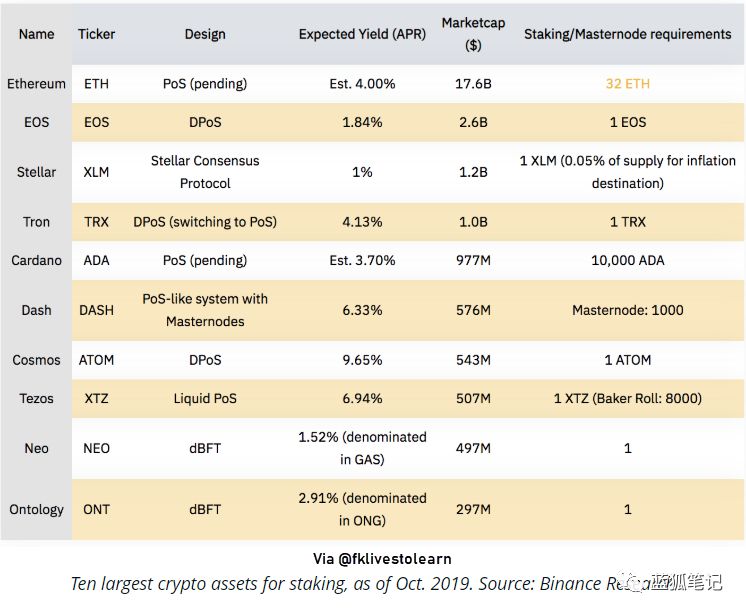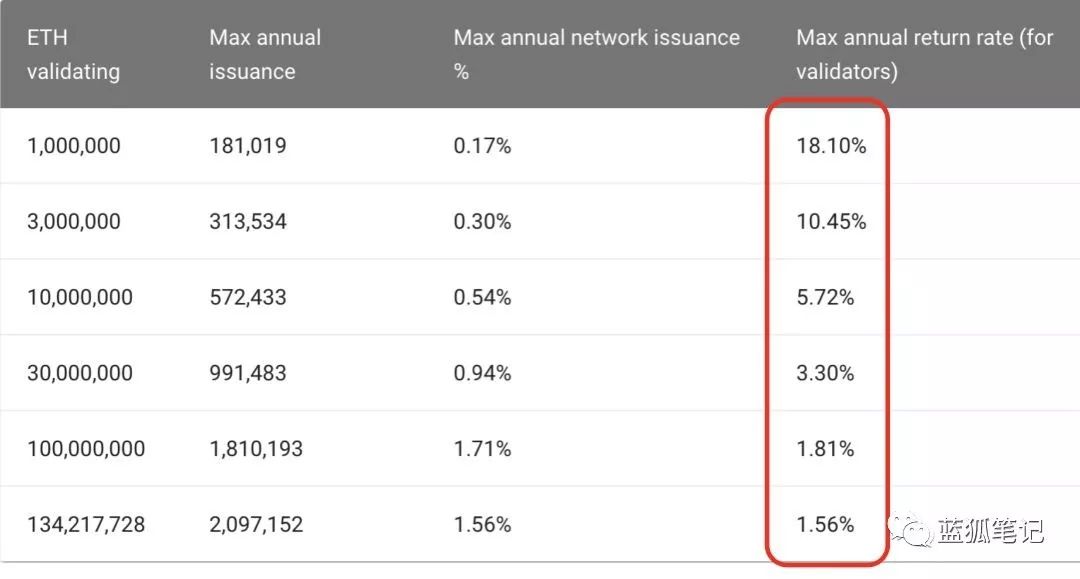ETH 2.0 is coming online, what are the main changes?
Editor's Note: The original title is "What can I expect from Ethereum 2.0? 》
Foreword: In any case, the upgrade of Ethereum 2.0 is a big event in the encryption world. Although there may be various problems in between, it cannot be ignored. In particular, it moved from the PoW mechanism to the PoS mechanism. This is a major change. From the observation of Blue Fox notes, PoW is more suitable for cryptocurrency, and PoS is more suitable for smart contract platform. What is the profound impact of the ETH2.0 online on the entire encryption world? Welcome to leave a message. The author, Faisal Khan, is translated by the "MoQi" of the Blue Fox Note Community.
The bear market in the encryption field dominated the third quarter of 2019. However, with the top-level cryptocurrency bitcoin bucking hard from the mid-term support of $7,300, the decline in digital assets has not continued in the past few days.
After Bitcoin, the altcoin also saw some positive actions. Ethereum also rebounded from the mid-term support of $160. This is of great significance to the largest altcoin, the Ethereum. The main network activation ("Istanbul") for the Ethereum system upgrade will be scheduled for the week of December 4.
- “Agriculture + Blockchain”: from farm to table, from sowing to inclusive finance
- Nakamoto is coming again, this time he has blonde hair and 250,000 bitcoins.
- Ethereum Enterprise Alliance, in conjunction with Microsoft, IBM, etc., launched a general classification of standards to promote cross-platform transactions
Earlier this year, another system upgrade named "Constantinople" implemented five Ethereum Improvements (EIP) proposals. The twin upgrades of “Constantinople” and “St. Petersburg” were activated at the height of 7,280,000 blocks in Ethereum.
The “Istanbul” upgrade will be implemented in two phases, with Phase 1 being the eighth hard fork on the $21 billion blockchain network. It will perform six code changes that are not backward compatible. Of all the changes, EIP1884 is perhaps the most controversial change. It will increase the computational cost of app developers retrieving data from the web.
As announced at the Ethereum Core Developers Conference, the Istanbul main network will be launched on the 9,056,000 block. However, if there are any technical issues in the software upgrade, the main network activation will be delayed by one month until January 2020.
Considering that the last hard fork of the upgrade of Constantinople was postponed at the last minute of the deadline, it was because of the discovery of a security breach in one of the five Ethereum Improvements (EIP), so this caution was taken Flexible way.

With this Ethereum system upgrade you can expect to see some of the following major changes:
- The new version of the network is named Ethereum 2.0 (ETH 2.0), and its consensus algorithm shifts from an energy-intensive PoW algorithm to a more secure and scalable PoS, which requires equity token holders to perform block verification. Instead of electing miners in production blocks by performing complex calculations.
- Although the main network is scheduled to start on December 4, 2019, it is not expected that the transition will be fully completed by January 3, 2020. Equity pledges, developers, and major Ethereum clients such as Geth and Parity are expected to complete the transition during this period to avoid any problems.
- In order to be eligible to perform the functions of the primary node or to meet the requirements for pledge ETH tokens, 32 ETH must be available on the network. The chart above is a comparison of other equity pledge platforms and their requirements.
- Ethereum's new economic model shows that verifiers are expected to receive annual returns of 4.6% to 10.3%. (Blue Fox Note: The annual rate of return should theoretically range from 1.56% to 18.1%, but it is actually expected to be more than 5%, and the specific rate of return varies depending on the amount of pledge tokens)
- The hardware cost of the new version of the Ethereum blockchain was determined by a new design proposal by Ethereum founder Vitalik Buterin.
- The new economic model provides a dynamic return that is adjusted based on the pledge of the token by the equity pledgee in the network. To calculate the net benefit, you can use the ETH 2.0 calculator in the Telegram app. (Blue Fox Note Note: Ethereum 2.0's pledge token income is based on the size of the equity pledge token in the network to give dynamic returns, the more ETH tokens pledge pledge, the more new ETH tokens are issued, but the overall The rate of return is lower. It is a dynamic balance. When the ETH of the equity pledge is too small, the rate of return becomes higher, which will encourage the market to pledge more ETH. When the ETH of pledge is too much, the yield will become lower, and the market will be ETH. Tokens are withdrawn from the pledge pool for other higher returns)
- However, the new model of Ethereum 2.0 maintains the inflation rate below 1%. (Blue Fox note: from the inflation rate range is from 0.17% to 1.56%, the annual return on income from 18.1% to 1.56%. When there are only 1 million ETH in the market for equity collateral tokens for block production, it The annual rate of return will reach a staggering 18.1%, and this situation will certainly attract the attention of the market. When the market pledges ETH tokens reach 30 million, the Ethereum inflation rate reaches 0.94%, and the annual rate of return is 3.3%. At present, the Blue Fox notes that after the ETH2.0 is launched, there will be a large influx of ETH tokens, and it is not unusual for the pledge token to reach 10 million or even 30 million ETHs.

The release of Ethereum 2.0 and the halving of Bitcoin in 2020 will be two major events in the encryption world, which may have a profound impact on the encryption market.
Risk Warning: All articles in Blue Fox Notes can not be used as investment suggestions or recommendations. Investment is risky. Investment should consider individual risk tolerance. It is recommended to conduct in-depth inspections of the project and carefully make your own investment decisions.
We will continue to update Blocking; if you have any questions or suggestions, please contact us!
Was this article helpful?
93 out of 132 found this helpful
Related articles
- People's Daily Ye Hao: Promoting the safe and orderly development of blockchain
- The Fed is hiring digital currency executives, and the “Join Refund” plan has been forced to restart?
- Data: Bitcoin has outperformed gold for 10 consecutive years. How about 2020?
- Monthly News | SEC Deterrence: October IEO, STO financing amount is 0, ICO fell by 95%
- BTC tested the upper resistance in the early morning, and the disk gradually stabilized.
- Zhu Jiaming: The central government advocates blockchain and incorporates scientific and technological elements into the concept of governing the country. Its historical significance cannot be underestimated.
- Dialogue Chairman of the Wanxiang Blockchain Xiao Feng: The blockchain field can produce Ali Tencent level company






